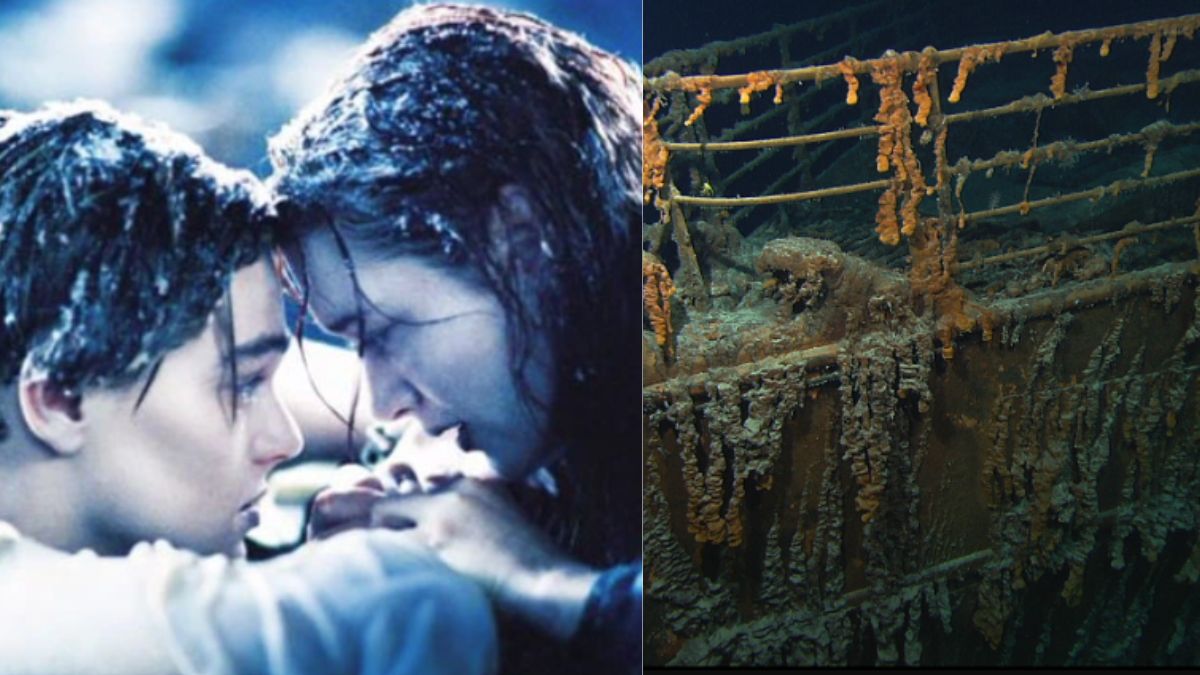- By Sukanya Saha
- Fri, 23 Jun 2023 01:29 PM (IST)
- Source:JND
Renowned Hollywood filmmaker and 'Titanic' expert, James Cameron, has now drawn parallels between the catastrophic demise of the submersible Titan and the potential factor that could have contributed to the downfall of the 'Titanic' itself: a perilous overconfidence leading to a tragic disaster.
The revered moviemaker known for his directorial work on the Oscar-winning blockbuster 'Titanic,' starring Leonardo DiCaprio and Kate Winslet in leading roles, recently drew attention to the striking similarities between the ill-fated sinking of the British passenger liner in 1912 and the unfortunate fate of the specialised submersible constructed to explore the remnants of the sunken vessel.
RMS Titanic wreck to be protected under historic treaty with US 👉 we're committed to celebrating the Titanic story whilst commemorating those who lost their lives. As such, we welcome any additional protection & safeguarding of the wreck. pic.twitter.com/iwhHid23ck
— Titanic Belfast (@TitanicBelfast) January 21, 2020
On Thursday, Cameron told ABC News, "I'm struck by the similarity of the 'Titanic' disaster itself, where the captain was repeatedly warned about ice ahead of his ship, and yet, he steamed up full speed into an ice field on a moonless night. And many people died as a result and for us very similar tragedy where warnings went unheeded to take place at the same exact site."
As a reputed submersible designer with expertise in creating vessels capable of descending to depths three times greater than the location of the Titanic wreck, Cameron criticised the carbon fibre structure of the Titan, labelling it as "fundamentally flawed."
Stockton Rush, the CEO of OceanGate and one of the unfortunate fatalities in the submersible incident, had previously justified the utilisation of carbon fibre in constructing the Titan. He believed that a submersible composed of carbon fibre would possess a superior strength-to-buoyancy ratio in comparison to titanium.
According to Cameron, the safety standards for submersibles are considered the "gold standard" worldwide, particularly due to the fact that no fatalities had occurred in a submersible until this recent incident. Although there were some accidents in the 1960s, no significant incidents have transpired since then, and safety protocols have considerably enhanced over the years.
Cameron stated that members of the deep-diving community have long been expressing concerns and raising alarms regarding the safety precautions associated with the Titan.
"This is a mature art, and many people in the community were very concerned about this sub. And a number of the top players in the deep submergence engineering community even wrote letters to the company, saying that what they were doing was too experimental to carry passengers and that needed to be certified, and so on," he said.
According to Goldfinger, the Titan, which is operated by OceanGate, a privately-owned company specialising in crewed submersibles for various applications such as commercial, research, and military purposes, lacked the presence of another submersible in the vicinity or the level of backup systems commonly employed by other vessels.
Cameron expressed his sense of security during his dives by using a two-sub system, where another submersible is present underwater alongside the main one. This arrangement ensured the availability of life support, communication, and power in case of any potential complications. According to Cameron, this setup provided a strong sense of safety and reassurance throughout their diving operations.

